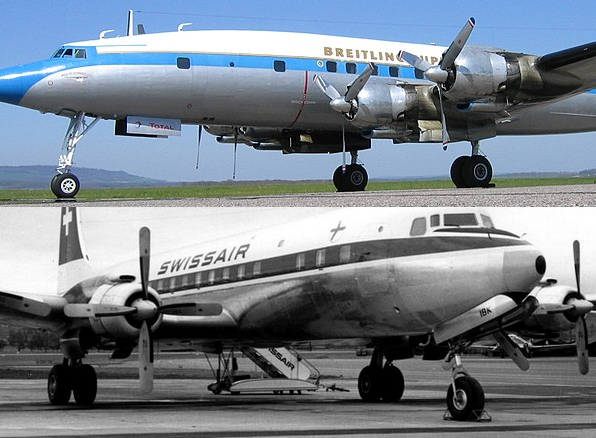The Lockheed Constellation has an enormously long nose gear, which causes the aircraft to slant appreciably backwards when sitting on the ground:
L-049
(Image by Greg and Cindy at Flickr, modified by Cobatfor at Wikimedia Commons.)
L-649
(Image by the San Diego Air and Space Museum, via Flickr, via Wikimedia Commons.)
L-749
(Image by RuthAS at Wikimedia Commons.)
L-1049
(Image by RuthAS at Wikimedia Commons.)
L-1649
(Image by Robert Togni at Flickr, via JuergenKlueser at Wikimedia Commons. Note that, due to the gigantic nose gear, the fuselage is approximately level, despite the ground sloping downwards considerably towards the aircraft's nose.)
In contrast, other airliners of the era had a much-less-ridiculous nose gear length, like the DC-7:
(Image by Ted Quackenbush at airliners.net, modified by Fæ at Wikimedia Commons.)
and the Stratocruiser:
(Image by Bill Larkins at Flickr, via Wikimedia Commons.)
Why is the Constellation's nose gear so much longer?










